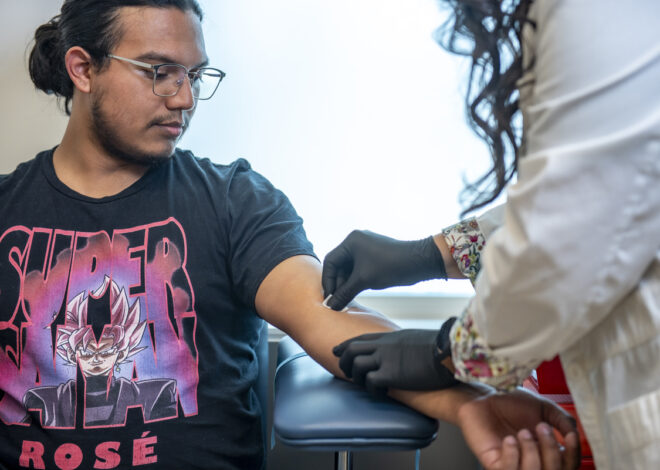
Vitiligo Treatment: Strategies & Emerging Therapies
Introduction:
Vitiligo is a multifaceted skin condition that affects millions of people worldwide, causing patches of depigmentation on the skin’s surface. One cannot underestimate the emotional and psychological toll of vitiligo, despite it not being physically harmful. Individuals with vitiligo often face stigma, discrimination, and low self-esteem due to the visible nature of the condition. However, amidst these challenges, there is hope. Scientific advancements and a deeper understanding of vitiligo have led to a myriad of treatment options aimed at managing the condition and restoring pigmentation. In this comprehensive guide, we will explore these vitiligo treatment strategies in detail, offering insights and hope to those living with vitiligo.
Understanding Vitiligo:
To effectively tackle vitiligo, it’s crucial to grasp the mechanisms underlying the condition. Vitiligo occurs due to the destruction of melanocytes, the cells responsible for producing melanin, the pigment that gives skin its color. A combination of genetic predisposition, autoimmune factors, and environmental influences can trigger this destruction. Stress, trauma, sunburn, and exposure to certain chemicals are among the potential triggers that may exacerbate vitiligo in susceptible individuals. Understanding these triggers can help individuals better manage their condition and make informed decisions about treatment.
Vitiligo Treatment Options:
A diverse range of treatment options are available for vitiligo, tailored to the severity, extent, and location of the depigmented patches. These treatments can be broadly classified into topical therapies, phototherapy, surgical procedures, and emerging therapies, offering a multifaceted approach to managing the condition.
Topical Therapies:
Often, the first line of defense against vitiligo, particularly for localized or limited patches, involves topical treatments. Topical medications applied directly to the affected areas stimulate melanocyte production or suppress the immune response targeting melanocytes. Doctors commonly prescribe topical corticosteroids to reduce inflammation and promote repigmentation. However, long-term use may lead to skin thinning and other side effects. Topical calcineurin inhibitors, such as tacrolimus and pimecrolimus, offer an alternative option for individuals who may not tolerate corticosteroids. Additionally, topical vitamin D analogs, such as calcipotriene, have shown promise in promoting melanocyte proliferation and repigmentation.
Phototherapy:
Phototherapy involves exposing the skin to specific wavelengths of light to stimulate melanocyte activity and promote repigmentation. Narrowband UVB (NB-UVB) therapy is a widely used phototherapy technique that has been shown to be effective in repigmenting vitiligo patches, particularly when administered regularly. Excimer laser therapy offers targeted treatment for localized areas of vitiligo, delivering high-intensity UVB light to stimulate melanocyte production. PUVA therapy, which combines psoralen with UVA light exposure, is reserved for more extensive or stubborn cases of vitiligo, as it carries a higher risk of side effects, including sunburn and skin aging.
Surgical Procedures:
When topical and phototherapy treatments prove ineffective or impractical, physicians may consider surgical interventions to restore pigmentation. Autologous skin grafting involves transplanting healthy skin from unaffected areas of the body to depigmented areas, effectively replenishing melanocytes. Punch grafting is another surgical technique where small sections of skin containing melanocytes are harvested from donor sites and transplanted into depigmented areas. Micropigmentation, also known as tattooing, offers a non-invasive option for camouflaging depigmented patches by implanting pigment into the skin to match the surrounding color.
Emerging Therapies:
Exciting developments in vitiligo research have led to the exploration of innovative treatment approaches that hold promise for the future. JAK inhibitors, which inhibit Janus kinase enzymes involved in immune signaling, have shown potential in modulating autoimmune responses and promoting repigmentation in vitiligo. Stem cell therapy offers a regenerative approach to repopulating depigmented areas with melanocytes derived from stem cells, potentially providing a long-term solution for repigmentation. Targeted immunomodulators, including biologic drugs that target specific immune pathways implicated in vitiligo pathogenesis, are also being investigated for their ability to halt disease progression and promote repigmentation.
Lifestyle Considerations:
In addition to medical treatments, certain lifestyle modifications can complement vitiligo management and support overall skin health. Sun protection is paramount for individuals with vitiligo to prevent sunburn and minimize the risk of further depigmentation. Wearing protective clothing, using broad-spectrum sunscreen, and seeking shade during peak sun hours are essential sun safety practices. Camouflage cosmetics, such as concealer creams, foundation, and self-tanning products, can effectively conceal depigmented patches. They offer individuals with vitiligo a way to enhance their appearance and boost their confidence. Stress management techniques are also crucial. Practices like meditation, yoga, and mindfulness can be beneficial, as stress exacerbates vitiligo. Implementing these techniques can help individuals manage their condition more effectively.
The Future of Vitiligo Treatment:
Living with vitiligo presents challenges. However, ongoing research and advancements in treatment offer hope for improved outcomes and quality of life. Collaborative efforts between researchers, clinicians, and advocacy groups are driving progress in understanding vitiligo’s underlying mechanisms and developing novel therapies. Raising awareness, promoting inclusivity, and supporting research efforts are crucial. Together, we can work towards a future where effective treatments are accessible to all individuals affected by vitiligo.
Conclusion:
Vitiligo is a complex and multifaceted condition, but it is not without hope. Individuals living with vitiligo can manage their condition and improve their quality of life through understanding treatment options, emerging therapies, and lifestyle considerations. Topical treatments and lifestyle adjustments are often the first steps in managing localized or limited patches of vitiligo. A supportive community and advocacy for research play crucial roles in empowering those affected by vitiligo. By embracing diversity and fostering inclusivity, we can promote greater acceptance and understanding of this skin disorder. Remember, you are not alone on your journey with vitiligo. Together, we can strive for a brighter, more inclusive future.
Also read: Decoding Eczema | Understanding The Chronic Skin Condition
![]()
![]()


